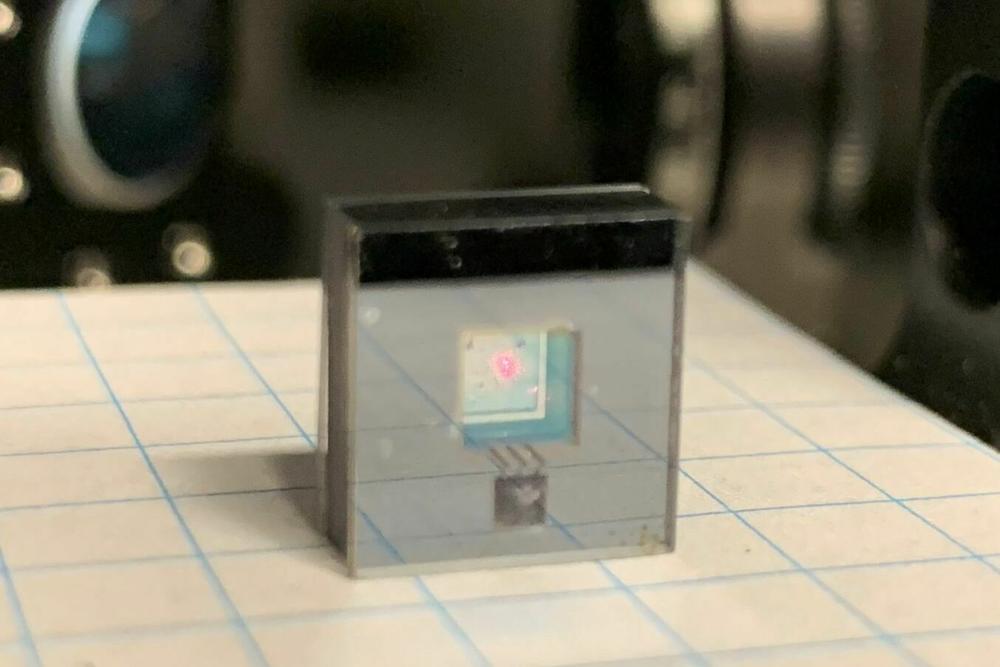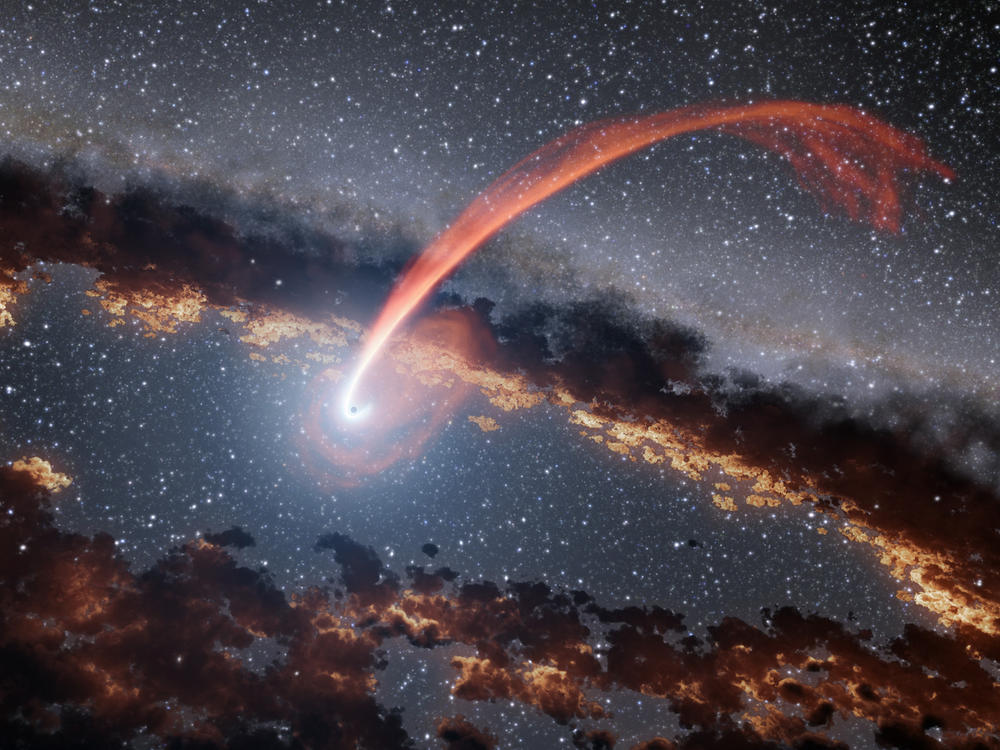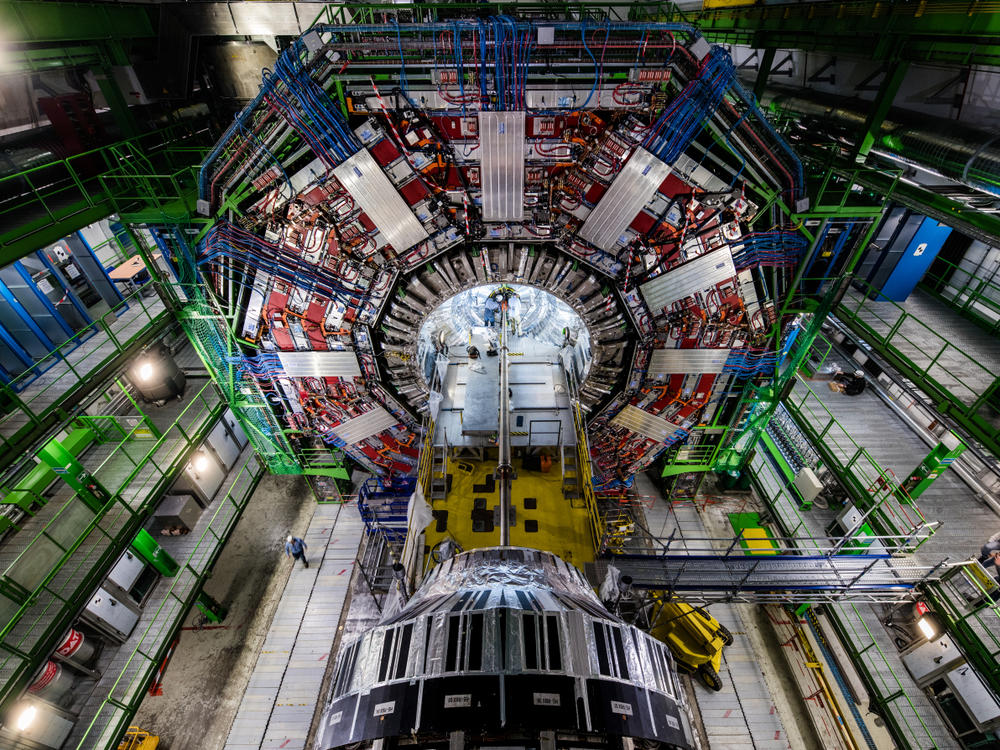Section Branding
Header Content
Researchers say time is an illusion. So why are we all obsessed with it?
Primary Content
America's official time is kept at a government laboratory in Boulder, Colo., and according to the clock at the entrance, I was seven minutes behind schedule.
I rush across the campus of the National Institute of Standards and Technology (NIST) and arrive at the end of a long hallway where physicist Jeff Sherman was waiting patiently.
"Sorry I'm running late," I tell him.
"It's OK, we only measure the nanoseconds," Sherman jokes.
It's never been easier to know what time it is. NIST broadcasts the time to points across the country. It's fed through computer networks and cell phone towers to our personal gadgets, which tick in perfect synchrony. Humanity's ever-improving agreement on the time smooths communication, transportation, and lubricates our economy.
But time has another side to it, one that the clocks don't show.
"A lot of us grow up being fed this idea of time as absolute," says Chanda Prescod-Weinstein, a theoretical physicist at the University of New Hampshire. But Prescod-Weinstein says the time we're experiencing is a social construct. Real time is actually something quite different. In some of the odder corners of the Universe, space and time can stretch and slow – and sometimes even break down completely.
For many people, this unruly version of time is "radical," she says. But as technology to better count the time grows ever more sophisticated, our everyday understanding of time itself may need to start changing.
A Sisyphean task
To get a sense of where the rigid time that governs most of our lives comes from, Sherman takes me into a beige-colored laboratory crammed with experimental equipment and computers. There are three big boxes looming above lab benches, holding three high-precision atomic clocks. Each box is labeled with a name: One's called George, another Fiona, and the third is Elvis.
"They all have quirks and personalities," Sherman explains. "When they fail at 2 a.m. you want to have a little bit of compassion for them, so you give them names."
George, Fiona and Elvis are just part of the 21-clock ensemble NIST uses to generate the official time. These three clocks tick using hydrogen atoms. The atoms are excited using radiofrequency energy and then sent into a chamber. Once inside, they decay, emitting a specific frequency of light.
Think of it as striking an atomic tuning fork, Sherman says.
The excited hydrogen emits "a tone of light," he says. The rest of the clock "is an instrument that tries to sample – tries to listen – to a little bit of that light and count the cycles of oscillation in that light."
Those light cycles are the "tick" of the clock. By averaging a subset of the 21 clocks together, NIST has created a system that can count the time to within one quadrillionth of a second. That means the government's clock can keep time to within a second over the course of about 30 million years.
In another room, that timing signal is sent out across the United States, and via satellite to other government laboratories in other parts of the world with clocks of their own.
It's an impressive system, but there's a catch. You've got to keep counting. If you stop, if you blink, you don't know the time anymore.
"In exchange for this wonderful idea," Sherman says, "you're now beholden to count forever and not lose track."
The MAN In 'Time Management'
The ever-advancing NIST clock is one way to understand time. But theoretical physicist Prescod-Weinstein bristles at that definition. She says this version of time is just the time the government wants you to think about.
"The management of what counts as correct time and what time it is in any given place is deeply related to authority," she says.
The time from this lab is used to run our lives. It says when planes take off and land, when markets open and close, when schoolchildren arrive at class. It controls computer networks, navigation tools and much, much more.
Governments around the world aren't just providing the time as an altruistic service to citizens, Prescod-Weinstein argues. It's about keeping society organized and efficient. It's about increasing economic productivity.
And this is why people feel so tense about the time – it's actually a technology being thrust upon them. "Capitalism sucks, and I think a lot of people's relationship to why time is not cool, is structured by the resource pressures that we feel," she says.
Wibbly wobbly timey wimey
True time is actually much more flexible than most people realize, Prescod-Weinstein says. According to Einstein's general theory of relativity, space and time are tied together, and space-time can bend and curve.
"The way to think about it is that that curvature is stretching out time," she says.
As time stretches, it slows.
The best-known force that stretches time is gravity. The more gravity somebody experiences, the slower time passes for them when compared to someone in a lower gravitational field.
The effect is miniscule compared to a human lifespan, but it is real and measurable. Boulder, Colo. is a mile above sea level. That means the gravitational field is slightly weaker, and time ticks by a little faster.
But modern technology can't deal with flowy time like this. As a result, the timekeepers at Boulder and elsewhere make corrections to ensure these different flows of time look like they're ticking in lock-step. The same goes for satellites farther from Earth, like those that make up the Global Positioning System. The system works by measuring the time difference between several satellites carrying clocks in space to the time that people measure on the ground.
Without correctly calibrating for the difference of the ticking clocks inside the GPS satellites, the system wouldn't be as accurate, Prescod-Weinstein says. "Any kind of system that uses GPS requires general relativity," she says. "You have to understand what time flow of the satellite is like and how that is different from time flow from Earth."
Far out time
Even farther from Earth, time gets really freaky.
In places where gravity is very strong, time as we understand it can break down completely. At the edge of black holes, for example, the powerful gravitational pull slows time dramatically, says Prescod-Weinstein. And upon crossing the black hole's point of no return, known as its event-horizon, she says space and time flip.
"You end up in a region where space now has an arrow, and it's one direction... and time doesn't have an arrow like it did before," she says. "There's really no sense of time."
At the edge of the observable Universe, there's something else happening, according to Katie Mack, an astrophysicist at the Perimeter Institute for Theoretical Physics in Canada. The Universe is expanding from the Big Bang, and that expansion is stretching time too.
"When you see things in the really distant Universe, because of the expansion of the Universe, it takes longer for things to happen," she says. The effect is known as cosmological time dilation and it's far more powerful than the tiny time changes seen near Earth.
Compare for example two identical stars that explode: One nearby, and one far away. "If we see a star exploding, and that star takes about 10 days to go from the brightest part of the explosion to dim again; if we look at it in the very distant Universe it might take 20-30 days," Mack says.
The far away star isn't exploding more slowly, time is ticking more slowly, at least from our perspective.
Mack, who's written a book called The End of Everything (Astrophysically Speaking), says that many billions of years into the future, time could get stranger still. The Universe is expanding, and because of entropy, energy and matter are becoming more and more evenly spread out across the ever-growing void. In its final state, the Universe may end up as an inert cloud of energy and matter, where everything is evenly distributed.
In this gray nothingness, "there is no future, there's no arrow of time anymore," she says. At that point time has no real meaning, she says. "It has no direction."
Subatomic madness
So time, as we understand it, has some really big problems, but it also has some really tiny ones, too. In fact, some scientists who study the microscopic interactions of fundamental particles are questioning the idea of time itself.
"Space-time is doomed," says Nima Arkani-Hamed, a physicist at the Institute for Advanced Study in Princeton, New Jersey.
Arkani-Hamed has reached this conclusion over the past decade, as he's tried to gain a better understanding of what's happening inside the world's most powerful atom-smashers. These giant devices use huge amounts of energy to collide together subatomic particles. Calculating each collision as it happens should, according to quantum mechanics, require hundreds of pages of complex mathematics. Yet inexplicably, a much simpler equation can work just as well.
Arkani-Hamed believes the concept of time itself may be behind the discrepancy. In physics equations, time is used to keep track of the sequence of things as events unfold. But he has come to believe that organizing particle collisions according to "when" unnecessarily complicates the mathematics. Instead, he's experimenting with abstract geometric shapes that can describe events without using time.
Arkani-Hamed says that these shapes can't yet replace the idea of time, but he believes that at some point time itself will be supplanted by some other theory of what makes the Universe tick.
"It's unlikely to survive in the fundamental principles of an even deeper understanding of physics," he says.
Tick Tock Tick Tock
The scientists back at NIST are well aware of all the problems with time.
"We are really focused on measuring time, but... it's pretty hard to really define it in a satisfactory way," says John Kitching, who heads the atomic devices and instrumentation group at NIST.
Kitching takes me to a lab where his team is developing their latest marvel – an atomic clock that can be mass-produced and put on a microchip.
"The vision for this type of clock is to essentially enable atomic timing to be used everywhere," he says. "Imagine – an atomic clock in every computer and in every cell phone."
Just as humans keep improving their maps, they must improve their clocks, Kitching says. Better clocks can make GPS more accurate, computer networks faster, and enable new technologies in everything from stock trading to astronomy.
And that's important because in the end, Kitching says, he actually agrees with Chanda Prescod-Weinstein, the theoretical physicist who believes that time as we experience it is a technology rather than a fundamental part of the universe. He too sees time is a human affair – a result of neurons firing and memories formed and books written.
"It's my belief that the forward passage of time is mostly a human construct," he says. "From a physics sense, it doesn't have that much value."
And yet, he adds, the NIST lab's relentless counting of seconds, minutes, hours and days is being used for everything from navigation to power production. For humans, there is enormous social value in trying to tame nature's unruly sense of time.
"We need to arrange to meet at a certain place at a certain time, " he says. "If we don't have those two pieces of information, then we're going to miss each other."
This story is part of our periodic science series "Finding Time — a journey through the fourth dimension to learn what makes us tick."
Copyright 2022 NPR. To see more, visit https://www.npr.org.



